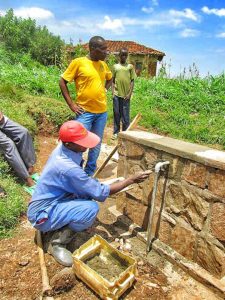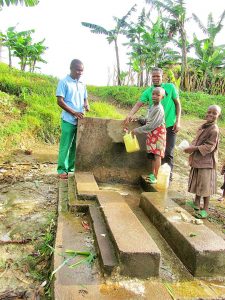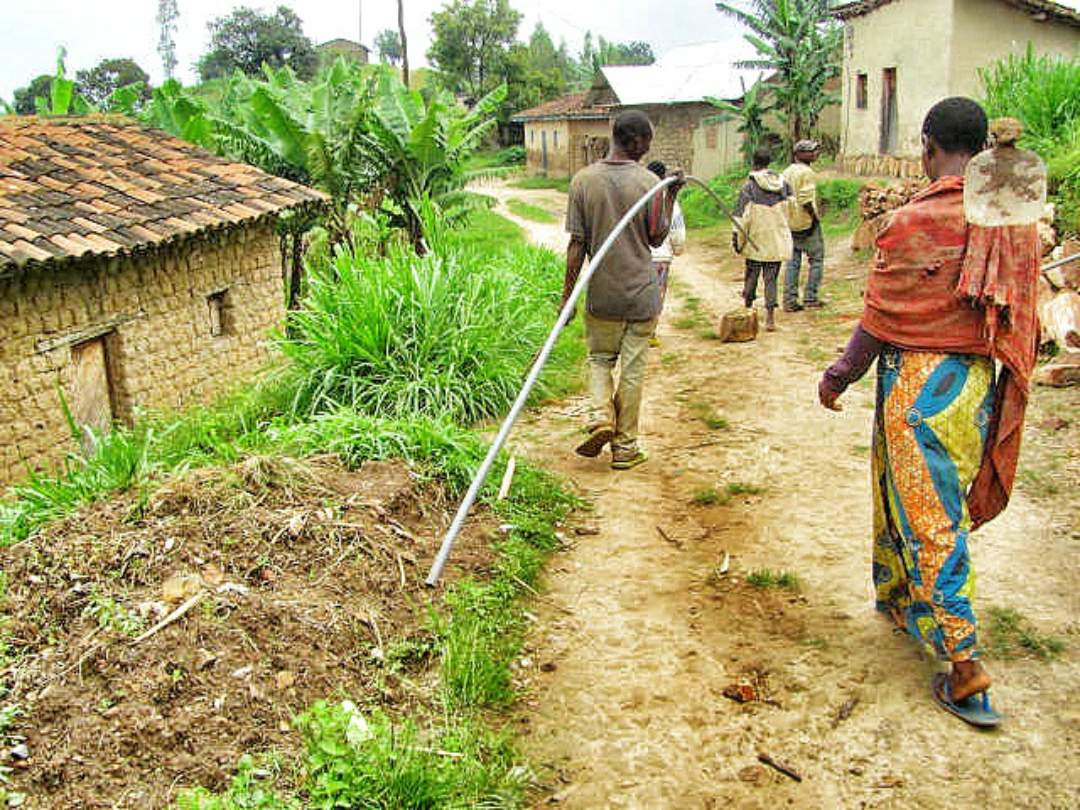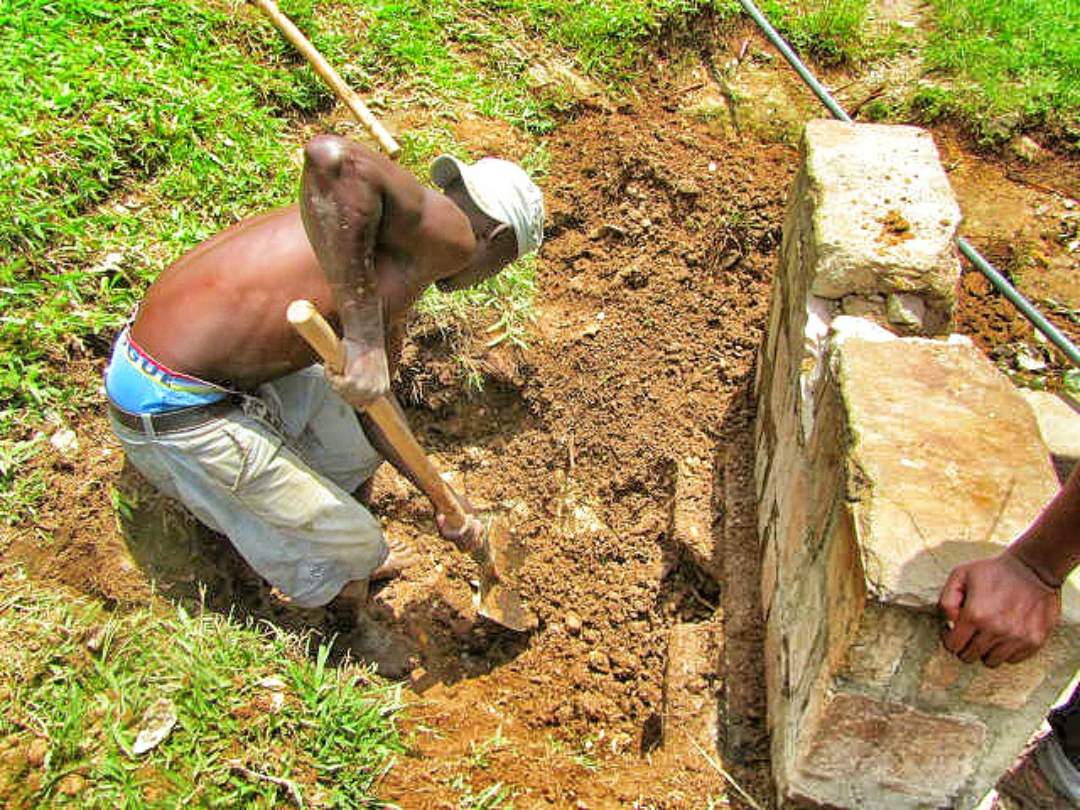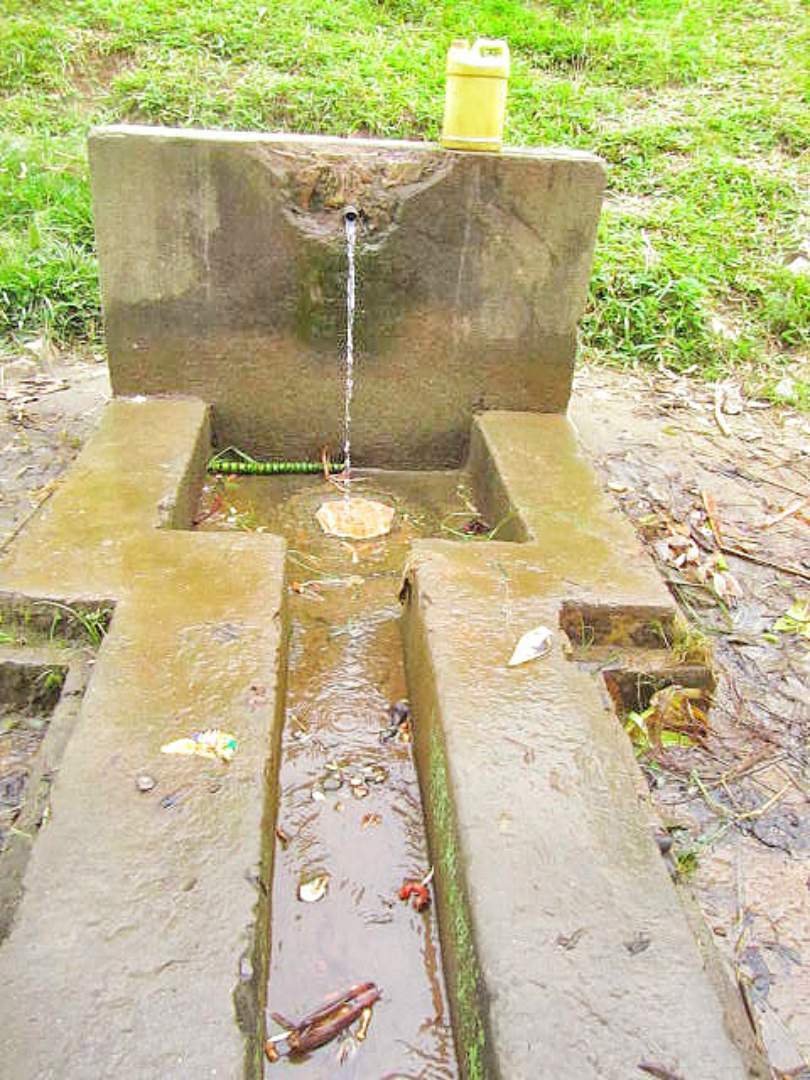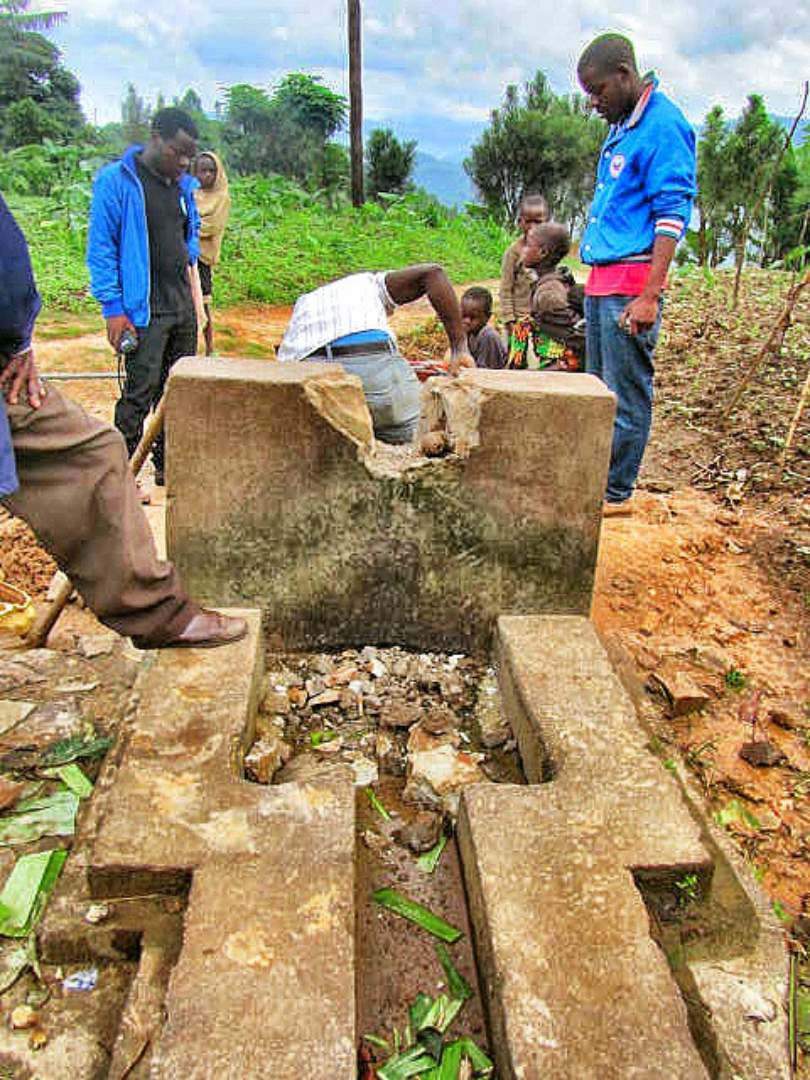This project has been completed under the direction of Peace Corps Volunteer April Zachary.
To read about the beginning of the project, CLICK HERE.
The following is April’s conclusion report: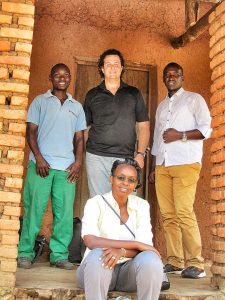
Bubazi Water Project 1: Gakoma Source
We implemented Bubazi Water Project 1: Gakoma Source on February 8, 2016 and it was completed on March 8, 2016.The successful and quick completion of Project 1 was possible due to the passion and commitment of Bubazi Health Center Titulier, Anastase Ntezimana, the professionalism, experience and organization skills of Engineer Claude Kaliza, great crew supervisors, and because of the community members who donated their time for much of the labor.
Three days after the project was funded, by Peace Corps and Water Charity, our team had our first meeting and created a plan of action. Crew Supervisors were on site by day four and I walked the entire waterline with them from Bubazi Health Center to Gakoma Source, a five-hour round trip hike. Crews traveled with us that first day of work and began clearing brush away from all the tanks and water fetching stations (called fountains).
When I traveled the water line again on week two I found multiple work crews working simultaneously on different projects such as building retaining walls to protect main water lines where they passed across small ravines, repairing water fetching stations that were located along the main water line, digging to find broken lines, etc.
The organizational skills used, the efficient crew management and the implementation of this project were all done in an extraordinarily professional manner. My job was to bear witness to the work as it progressed, to keep tabs on the money and receipts and to make sure all the work was done to specifications. And it was.
On March 10th, two days after the completion of Project 1, Rhoda Kanyesigye, our Peace Corps Rwanda Grant Coordinator and Scott Wilhelm, our Communications Coordinator, came to visit our community in order to see the work accomplished on the water distribution system. What a privilege it was to have the complexity of this project witnessed by two people outside of the community.
Anastase began by giving Rhoda and Scott a tour of the health center where they were shown that every faucet on the grounds now worked and that the flow of water was abundant and the pressure was amazing. After the tour, we piled into an AWD Peace Corps vehicle along with one of our local water source experts, Naphtale, who works at the health center doing cleaning and maintenance.
Scott drove us as far as we could go by a vehicle on steep, rugged roads. This was some of the most rugged four-wheel driving I’ve ever experienced. After that, we walked. We saw efficiently functioning water fetching stations being used by the locals all along the waterline. We were greeted by villagers with smiles and a feeling of celebration.
In Senga Village, Rhoda asked one of the locals where they fetched their water before the fountain was repaired. He pointed off into the distance and said “That creek down there.”
“How many families now fetch water here?” Rhoda asked. “About 250 families,” the man replied. I am happy.Goals Achieved
1. We achieved the primary goal of repairing the entire main water distribution system from the Gakoma Source to Bubazi Cell and all water fetching station (fountains) along the mainline as well as all water fountains within the Bubazi Cell that are supplied by the Gakoma Source. A total of 16 fountains have been repaired supplying quality water to six villages: Three villages in Getega Cell: Kamihaho, Kagali and Senga and three villages in Bubazi Cell: Kavumu, Gitwa and Kigarama. This supplies water to approximately 3,116 village people.
2. We achieved the goal of repairing all distribution lines that provide water supply from the Gakoma Source to the Bubazi Health Center thus allowing four holding tanks to be full at the health center to be full at all times.
3. Bubazi Cell community members have access to quality water at fountains supplied by Gakoma Source
4. Create a Water Security Committee within each village of Bubazi Cell by May 2016. This objective will be complete by May 2016 as stated.
Changes in the Initial Objectives
1. 3 villages from Getega Cell (Kamihaho, Kagali and Senga) have access to fountains within 5-30 minutes walking distance providing quality water to 1,708 village people in Getega Cell. This was not stated in the objectives. These villages are provided with fountains because they are located along the Gakoma Source main distribution line.2. The goal of 20 mothers having access to water fountains within 5-30 minutes walking distance from their homes will not be achieved until Project 2: Gatugunguru Source is completed (a project that is an extension of Project 1: Gakoma Source).
3. 20 mothers from Kavumu, Gitwa and Kigarama Villages have access to quality water within a 5-60 minutes walking distance from their home.
Community Feeling
The communities of Bubazi Cell and Getega Cell are excited and grateful. This is revealed when workers at the health center turn on a faucet at a fountain and clear water shoots out and smiles appear on many faces followed by the words “Amazi menshi! Ni biza cyane!” (“Abundant Water! This is good!).I see children fetching water with smiles on their faces and women often stop me, grab my hand, and begin talking so fast in Kinyarwanda that I
cannot understand them. Then I hear the word “amazi” which means water and I know they are talking about their repaired water fetching station and they are smiling. People approach me, whose water problems have not been solved yet, and ask if we will be bringing them water too. I tell them we have a second water project coming and that one will bring quality water to their village. “Murakoze!” (Thank you!”) they respond. The feeling of the community is one of excitement and hope.
Unexpected Events and Recommendations *
The most profound unexpected event that happened during this project was that it was completed very quickly. I could not have wished for a more efficiently operated project.We did discover as we repaired the Gakoma Source line that the majority of the water fetching stations in Bubazi Cell are supplied by Gatugunguru Source (Project 2). Six villages have repaired fountains with a total of 16 refurbished fountains. Three of those villages are in Getega Cell along the Gakoma line and the other three are in Bubazi Cell.
There are 26 fountains left to be repaired in Bubazi Cell. This work is projected to be completed through the implementation of Project 2.
Also, we cut our budget very close. I would recommend having a small cushion of funds to allow for unexpected work that needs to be done that only reveals itself once a project is started.
Lessons Learned and Promising Practices *
1. Good teamwork makes for an efficiently run project.2. Breath. Regroup. Stay present with the work that is happening, but let people do their jobs
3. When a community truly wants something and is ready for it, then the project works itself.
4. Keep track of the money. Have receipts coming in on scheduled timelines…not at the last minute.
5. Observe the work being done at least 1-2 times a week, even if the trek there and back kicks your butt. Your presence means everything.
6. Take lots of before and after photos
7. Have regular meetings to talk about the progress of the project, to collect receipts and to review the budget.
8. Be happy and committed.
We would like to give thanks to April for her diligence and for the successful completion of this project.
